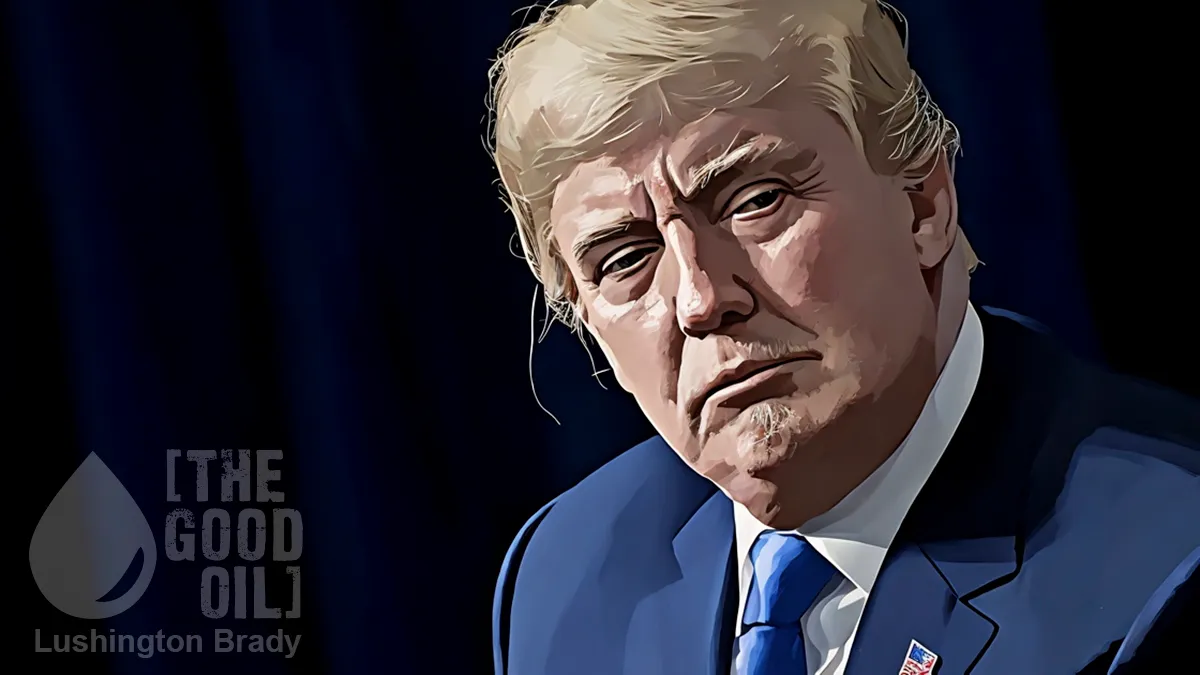Listening to various people talk about Trump’s “tariff strategy” (TTS) – including some who are supposedly very knowledgeable – it’s becoming clear that many, even some members of our coalition Government, don’t truly understand it.
Many people misunderstand TTS because they fail to grasp how it works in practice, beyond the theoretical, and they are misled on the issue by the anti-Trump media and by those with a vested interest in undermining the strategy.
To understand what is going on, let’s back up a bit. The World Trade Organization (WTO) is an international organisation that deals with the rules of trade between countries. It was established on 1 January 1995 and replaced the General Agreement on Tariffs and Trade (GATT), which had governed international trade since 1948. It has 164 member countries, and its primary goal WAS to ensure that global trade flows smoothly, predictably and freely.
The word freely is key, because New Zealand fully embraced the idea and we try to play the trade game with integrity, much to our disadvantage.
To illustrate the disconnect, I recall attending a NZ Institute of Directors meeting around 2015, where the minister of trade was enthusiastically promoting the virtues of ‘free trade’. Yet I had just returned from Asia, where I had been conducting factory inspections for companies like Target and Walmart. On the ground, I saw manufacturers in countries like China – WTO members since 2001 – benefiting from substantial state support, including subsidised land, power, water and local rates, as well as imposing heavy tariffs on imports to protect domestic markets. This clearly contradicts the principles of free trade and WTO compliance.
For another example, in 2014 – just a year before that meeting – Indonesia (a WTO member since the inception of the organisation) introduced tariffs of five to 20 per cent on various food and beverage imports, including dairy and alcohol. New Zealand and the US challenged these measures as WTO violations, citing millions of dollars in lost export opportunities.
Despite such realities, in 2015 we were being told to believe in ‘free trade’ – and now, in 2025, we’re hearing the same rhetoric from the same type of people who are still ignoring what actually happens in practice.
Take the Indonesian example and then multiply it by the hundreds or thousands of examples, globally, and you get exactly what America is complaining about – not millions but billions or even trillions (over time) of lost export opportunities and the attendant jobs that go along with that. Along with these lost jobs, you also have the lost tax take… and you have a growing trade imbalance and currency uncertainties. This accurately describes the current situation in the US. Finally, with a debt of almost 37 trillion dollars, the US is in very troubled waters regarding its debt-to-GDP ratio, which now stands at approximately 122 per cent. Sustaining this high debt strains the country’s finances, limiting spending on critical areas like infrastructure, healthcare and education and increasing its vulnerability to economic shocks – and there are many who claim that the US is recession bent.
The best way to get out of this is to increase the country’s GDP. Trump is already trying to do this and in just two months(!) has attracted nearly three trillion dollars in investment commitments across diverse sectors. Notable contributions include NVIDIA’s 100 billion dollars, Johnson & Johnson’s 55 billion dollars and Taiwan Semiconductor’s 100 billion dollars for semiconductor manufacturing. Hyundai pledged 20 billion dollars, including a steel plant in Louisiana, while Apple committed 500 billion dollars to innovation and manufacturing. Pharmaceutical giant Eli Lilly announced 27 billion dollars in investments and SoftBank collaborated with OpenAI and Oracle on a 100-billion-dollar Stargate initiative. And, of course, all these companies were told that the tariffs were coming… so what they have done is essentially ‘leapt’ the tariff barrier by investing in US-based manufacturing – so Trump’s strategy is already working.
However, these solutions are insufficient to fix the US’s 37 trillion dollar debt and the ongoing trade deficits, which are the wellspring of continuing financial problems. This deficit is rooted in the fact that the WTO has failed miserably in promoting true ‘free trade’ and tariff regimes are rampant in almost every country in the world. Even New Zealand is at fault: for example, leather shoes imported from the US, which does not have a free trade agreement with New Zealand, are typically subject to a 10 per cent tariff…
Whichever way the US looks, it sees tariffs imposed on them in contradiction to WTO rules and acting to the disadvantage of the US.
· What the US is proposing is a 50 per cent ONLY of the tariffs that are being imposed on them.
This response is entirely reasonable, as the US imposes fewer tariffs than many of its trading partners and simply cannot afford to continue along the current path of one-sided trade.
If you’re a political opponent of Trump, you might raise concerns about tariffs causing inflation. The argument is that tariffs not only disadvantage trading partners but also drive-up prices in the US. While some short-term inflation is possible, it’s far from certain.
For example, in some cases – such as car manufacturing – it may now be cheaper to produce goods in the US than in China. Advances in automation and technology have reduced production costs and US workers are significantly more productive. In 2022, US labour productivity was worth approximately $92.30 per hour, compared to just $15.90 in China. As well, being closer to the market it means that transport and other costs will be less. Additionally, consumers can often switch to substitute products if prices rise, limiting inflationary pressure. Finally, retailers may also absorb or shift tariff costs onto distributors or suppliers, especially if demand weakens at higher price points.
Note that the government can mitigate tariff costs, e.g., Trump says that people who buy locally manufactured cars can expect a tax benefit. This could be perceived as a form of subsidy, which would bring us onto that topic – except for the fact that subsidies are so rampant within world trade that the point is moot. In summary, it is by no means certain that tariffs will produce long term or particularly damaging inflation.
What the US is doing now is essentially fulfilling the role the WTO was meant to play – something widely applauded in 2015. The goal is to bring all trading partners to the table to renegotiate fairer terms: easing the financial burden on the US and helping to address its mounting debt by moving away from an unbalanced and punitive trade system.
New Zealand should get itself a seat at the table as quickly as possible and negotiate, as Australia has already done and Vietnam is in the process of doing, a ‘free trade’ deal that actually is just that, instead of lip service.








